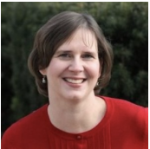Defining Evangelicals and the “81 Percent”
 Amy E. Black, Professor of Political Science, Wheaton College
Amy E. Black, Professor of Political Science, Wheaton College
The results of the 2016 presidential election created international shockwaves that continue to reverberate. Journalists, academics, bloggers, pundits, and more have offered a wide range of explanations for what happened. Although many themes and factoids have emerged in the election post-mortems, one data point that has captured significant attention is the exit poll result showing 81 percent of white evangelicals voted for Donald Trump. For all the extreme focus on this one percentage,[1] few commentators have stepped back to consider the origin of the 81 percent figure and its possible limitations.
How Do Researchers Define Evangelicals?
The term evangelical is complicated and contested. Depending on the vantage point, evangelicalism may refer to a social movement, a theological movement, or a political movement. The answer to how to define evangelicalism depends in large part on who is asked and in what context the phrase is addressed. Unfortunately, many discussions of evangelicals begin by assuming a definition or context without clarifying terms, and people talk past one another.
Although definitions of evangelical abound, I tend to use historian David Bebbington’s widely-used and respected classification. His classic interpretation defines evangelicalism as characterized by four central components: (1) conversionism – the need for individual transformation; that is, the aspect of Christianity that is often characterized as one’s personal decision to accept Jesus Christ; (2) biblicism – the belief that the Bible is the ultimate spiritual authority; (3) crucicentrism – the emphasis on the salvific work of Jesus Christ’s death and resurrection; and (4) activism –the commitment to live out the gospel in missionary and social reform efforts. This definition places emphasis on theological beliefs but has a behavioral component as well.
Limits of Social Science
Although the Bebbington definition is incredibly helpful, it is difficult to apply in social science research. Social scientists can ask many questions and attempt to create complex models, but they can never tap into all of the factors that explain the complexity of human behavior. My branch of social science, political science, relies most heavily on quantitative data to explore research questions and favors studies that include sample sizes large enough to allow for statistical inference. One of the most common methodologies used to explore voting behavior is survey research, or opinion polling.
Surveys offer a constructive window into what people are thinking on a wide range of topics, but they have limits. One pressing constraint is questionnaire length. Time and budget limit the number of questions researchers can ask. In a typical large-scale political survey, for example, researchers will ask just a few questions about religion. Even the most focused surveys designed to explore religion and politics might have room to ask only a dozen or so questions specifically about religious beliefs and practices.
Complicating matters further, pollsters need to write short and simple survey questions, even when the topics are complex and multi-faceted. To maximize efficiency, most survey questions need to be closed-ended; that is, respondents are forced to select the best answer (not necessarily the right answer) from a short set of possibilities. These limitations lead to oversimplification, so survey questions always have flaws.
How Do Social Scientists Measure Religion?
Religion researchers have developed a range of techniques to attempt to classify people by religion and gauge their religiosity. The common elements social scientists use to measure religious commitment are often called the “Three Bs” – belief, belonging, and behavior.
The first of these is belief –what people say they believe. Some national surveys include a battery of questions that ask about things like belief in god in general, belief in God as a person with whom people can have a relationship, views on the Bible, belief in life after death, and others. In many ways, these measures presuppose Christianity and are less helpful when applied to other religions. Even so, these kind of questions offer some sense of the nature of a person’s religious beliefs, and responses tend to cluster into meaningful patterns.
The second common measure is belonging –a measure of connection with religious organizations. National surveys typically ask about membership in religious congregations, participation in such congregations, and sometimes if parents send their children to religious schools. Each of these factors suggests how tightly or loosely a person belongs to a religious community.
The third aspect of religious commitment is behavior, the measure of what people do. A fancier term for this is “religious salience.” The most common measure is frequency of attendance at religious services. Other questions include frequency of prayer outside of a religious service, frequency of reading the Bible or another sacred text, and the extent to which someone prays or reads the Bible with his or her children.
Those who study religion disagree about the best way to use limited data to classify people into distinct religious categories, but most agree that it is optimal to try to include some measure of each of the “3 Bs.” Unfortunately, very few political surveys have room for even a handful of religion questions. Few studies include measures of beliefs, belonging, and behavior, so religious classifications require some speculation.
Religion in the 2016 Presidential Exit Poll
The political surveys that tend to capture the most media interest are exit polls, those short surveys administered to a sample of voters as they leave the polling place on Election Day. Exit polls provide the data to forecast election results before the official vote tabulations are complete, and they offer clues for post-election analyses of voter opinions. As the 2000 election reminded us, exit polls help predict outcomes, but they are far from perfect and not always accurate.
Which brings us back to that much-cited statistic from the 2016 election: 81% of white evangelicals voted for Donald Trump. The national exit poll included only three religion questions. The first asked for basic religious affiliation, with options of “Protestant or other Christian,” “Catholic,” “Jewish,” “Other,” or “None.” Another asked about frequency of attendance at religious services. A third religion question asked respondents if they were evangelical or born again in their faith. Pollsters selected the voters who said “yes” to that question and also identified as white, creating a category reported as “white evangelicals.”
Combined, these three questions offer a glimpse of religious behavior by asking about church attendance, and they probe slightly into religious belonging with the religious affiliation and evangelical/born again questions. The poll did not have space to include any questions that probed religious beliefs. The findings are useful and reveal general patterns that persist across elections, but they offer very little detail to measure religious commitment with any depth. They also craft an evangelical measure based solely on voters who self-identify as evangelical or “born again.”
The finding that 81% of so-called white evangelicals voted for Trump is interesting and worthy of reporting. But the survey uses a blunt instrument to categorize voters as “evangelicals.” We don’t know voters’ particular church denomination, and we know nothing at all about their religious beliefs. This catch-all mechanism for identifying evangelicals will likely capture many people who would fit the Bebbington definition, some who have merely a cultural attachment to the movement, and many who fit somewhere in between.
Consider other much-less cited statistics from the same dataset: 56% of weekly churchgoers voted for Trump, and 40% voted for Clinton. Although Clinton won 62% of the voters who never attend religious services, 31% of them voted for Trump. News reports rarely lingered on the data that showed Trump winning 58% of the Protestant and 52% of the Catholic vote. These results reveal interesting patterns about religious adherents and vote choice, but they tell us nothing about voters’ religious beliefs and how they might affect vote choice.
The 2016 presidential election exit poll offers useful but limited data to help researchers understand voting dynamics. With so few questions about religion, the data are only sufficient to point to general trends about the relationship between religion and politics. As has been the case for many decades, religion was a significant factor in the 2016 presidential election, and self-identified evangelicals clearly continued to show a strong preference for the Republican candidate. But a laser-like focus on the 81% figure (a crude measure of “evangelicals”) masks the many limitations of the exit poll data and likely overstates evangelical support for Trump.
[1] A Google search of the phrase “81 percent of white evangelicals” on June 13, 2018 returned 974,000 hits.
Contact Us
Center for Applied Christian Ethics
117 Blanchard Hall
501 College Ave
Wheaton, IL 60187
